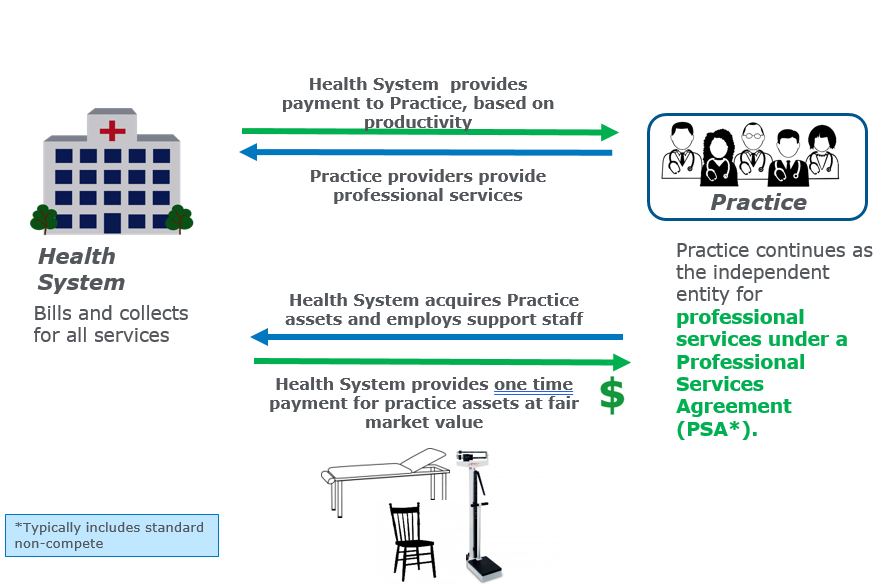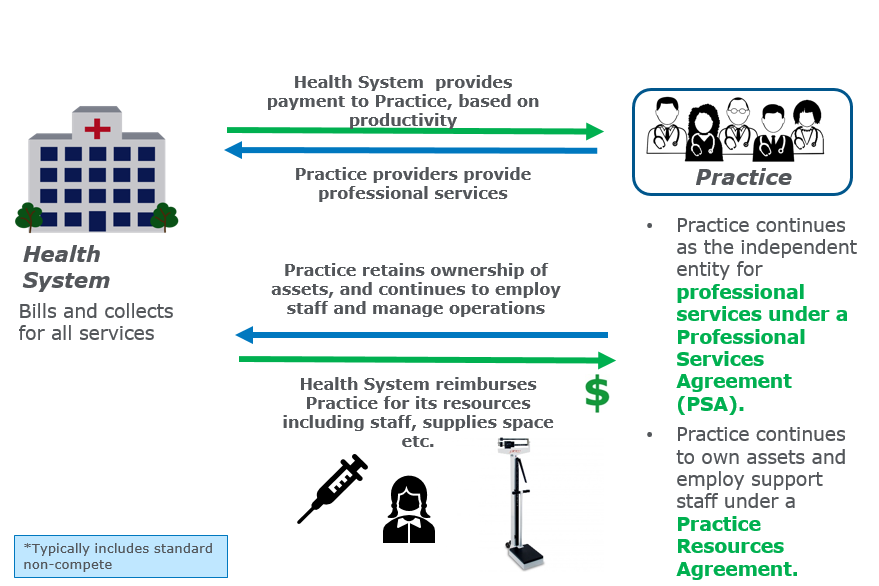A Post-COVID Alternative to Physician Employment
Independent physician practices took a financial beating during the first months of COVID-19—and not just due to postponement of elective procedures. Today, consumers remain fearful of returning to a physician office environment, with office visits down 20 to 30 percent compared with pre-COVID levels. Now, many of these practices are coming to hospitals to make a deal.
But even as independent physician practices “rapidly approach a financial cliff,” as two former federal health officials shared in a recent op-ed, hospital employment isn’t the only option for affiliation. In the months following the coronavirus outbreak, practice lease arrangements are becoming an increasingly popular option among physicians who are not interested in giving up control of their practices.
How Practice Lease Arrangements Work
At Veralon, we’re seeing a rise in the number of hospitals and physician practices that are exploring practice lease arrangements as an option for alignment.
Often seen as a transition strategy, practice lease arrangements come in a variety of forms:
- Professional services leases enable hospitals to compensate physicians at fair market value and cover provider-related costs, all while allowing physicians to maintain their independence and ultimately determine the distribution of compensation among the providers in the practice.
- Practice resource leases are arrangements in which hospitals may take financial responsibility for the medical office space in which physicians practice as well as non-physician staff, equipment, supplies, and other resources that support provision of professional services.
- Alternatively, hospitals may acquire the Practice’s non provider assets and directly employ the support staff.
Option 1: Health System leases professional services and acquires Practice assets
Option 2: Health System leases professional services as well as Practice resources
Benefits for physicians: For physicians, a significant advantage of practice lease arrangements is that decisions around distribution of compensation are left to the practice. Many practices are attracted to this model because it enables physicians to maintain any internal pay structures they may have.
Physicians who enter into practice lease arrangements also can negotiate the ability to continue to benefit financially from ancillary services offered by the practice. Maintaining access to ancillary revenue is important because 91 percent of family practices and 89 percent of internal medicine groups offer at least one ancillary service, according to a Medical Economics survey.
Lease models also typically result in better reimbursement, as a leased practice may be able to take advantage of a hospital’s superior fee schedules. These models also enable physicians to remain in control of decisions that affect operation of the practice. Additionally, lease models keep the physician practice’s corporate entity in place, giving the practice a way to easily sever ties with the hospital, if needed.
Benefits for hospitals: For hospitals, these arrangements support tighter integration with physician practices that have taken a financial hit during the COVID-19 pandemic but are reluctant to give up their independence. Such arrangements support improved performance under value-based payment models by aligning the interests of the hospital and the practice. They also provide hospitals with the opportunity to test the waters of partnership with a model that is more easily unwound than employment.
Lease arrangements also are typically less expensive for hospitals than full employment, and they require a limited level of commitment. Often, they are structured on a per wRVU basis so that hospitals may purchase only the professional services that are required. Additionally, independent practices often have lower staffing and benefits costs than do hospital-owned practices.
The primary drawback is that the lease model doesn’t provide hospitals with the level of integration they would gain through full employment. Hospitals also give up a certain degree of control under these arrangements.
One Size Does Not Fit All
A leased practice entity essentially operates as a management services organization. It provides hospitals with a turnkey package—from administrative services to non-physician support staff, office space, equipment, furnishings, and access to patient records. Lease arrangements also typically are easier to achieve than full employment.
But there are numerous considerations hospital leaders must weigh before entering into a practice lease arrangement. As outlined in a recent Veralon blog, these considerations include:
- What type of lease structure will best meet your organization’s goals?
- Which party will be responsible for equipment repair and replacement?
- Who will manage the arrangement for the hospital?
- What “triggering events” will enable either side to renegotiate the contract?
The Bottom Line
As physicians face an uncertain economic environment during COVID-19, practice lease arrangements could provide the right mechanism for alignment between hospitals and independent practices. However, these arrangements can be complicated to structure and challenging to manage. Leaders for hospitals and physician practices should carefully weigh the advantages and drawbacks of these agreements as they determine their path toward COVID-19 financial recovery.
Contact the Authors:
Karin Chernoff Kaplan, Director, kkaplan@veralon.com
Rich Chasinoff, Principal, rchasinoff@veralon.com

